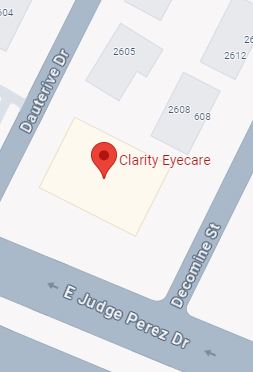LASIK and Refractive Co-Management
What is LASIK?
Laser-Assisted In Situ Keratimileusis (LASIK), commonly known as laser eye surgery, is a type of refractive surgery performed by an ophthalmologist that corrects myopia (nearsightedness) hyperopia (farsightedness), and astigmatism. It is also the most common type of refractive surgery, which over 11 million procedures completed in the United States as of 2011. Worldwide, LASIK has been performed over 28 million times as of 2009.
LASIK involves the use of a laser to reshape the cornea, which improves visual acuity. In most cases, this provides a permanent solution for patients who would otherwise need eyeglasses or contact lenses. Additionally, it can even reduce the need for reading glasses in the future with a technique known as mono-vision.
This surgery is similar to another procedure known as Photorefractive Keratectomy (PRK). Both are far more advanced than Radial Keratotomy, another refractive surgery that corrects vision. In some cases, a patient may have a moderate-high myopia or thin corneas, making them inoperable with LASIK or PRK. However, the Phakic Intraocular Lens is a viable alternative.
LASIK is a very quick surgical procedure with little to no pain or discomfort associated with it during and after the procedure. The recovery period is also very short, as patients typically see 20/20 within 24 hours.
Who Are Ideal LASIK Candidates?
The ideal LASIK candidate doesn’t have any eye diseases or illnesses–such as chronic dry eye or corneal disease–and has a sufficiently thick cornea. The thickness of the cornea is crucial because the procedure requires removing a part of the cornea to reshape the eyes, giving them 20/20 vision. The best way to find out whether you are a great candidate for LASIK is by coming to our Chalmette optical for a comprehensive eye exam with Dr. Leslie Pham. We also recommend you come in for a LASIK consultation and a preoperative exam so we can be sure you are well-prepared for surgery if you are a viable candidate.
Advantages And Disadvantages of Laser Eye Surgery
Because LASIK is elective and not required, advantages and disadvantages must be taken into account when deciding if you would like to undergo the procedure.
Advantages:
- Potential for 20/20 (or better) vision
- Less dependence on prescription eyeglasses or contact lenses
Disadvantages:
- No guarantees that you will gain perfect vision
- Potential for worsened vision
In normal circumstances, LASIK goes well and as expected, but sometimes other factors must be considered. This is why we recommend getting regular comprehensive eye exams and a LASIK consultation.
LASIK Procedure Specifics
The entire procedure only lasts about 15 minutes in total and it is a two-step process:
- Step 1: The surgeon uses a laser to cut into the cornea and creates a flap of corneal tissue.
- Step 2: The laser reshapes the eye for about 1 minute, correcting your vision. Next, the flap is placed back over the eye.
These two steps are then followed again on the other eye.
Wavefront LASIK
Wavefront LASIK–also known as wavefront-assisted, wavefront-guided, or custom LASIK–incorporates computerized mapping of the laser so it can operate even more accurately as opposed to merely basing the treatment off of the patient’s current prescription. This method can correct even the subtlest imperfections (higher-order aberrations) in the eye than non-assisted lasers cannot. Numerous studies have shown that wavefront-guided LASIK results in sharper vision and improved night vision.
After Laser Eye Surgery
Once your surgery is complete, you will be prescribed medicated eye drops to use along with plastic shields that cover your eyes. Although you can see clearer immediately after the procedure, your vision will still be blurry and your eyes may be sore or watery, so you cannot drive yourself.
The medicated eye drops will be administered several times throughout the next few days to prevent infection and promote healing. You may also use specific artificial tears recommended by the surgeon to keep your eyes comfortable. Rest your eyes as much as possible the day of the surgery and consider resting in a darker room.
By the next day, you should see clearly enough to drive and go about your normal activities again. However, your eyes will still be healing, so do not rub them. If you are using Latisse, please be sure to speak with our Chalmette eye doctor to determine when you may resume your treatment.
LASIK Co-Management
At our Chalmette optical, we offer post-operative care based on a previous agreement with your surgeon. On the day after your surgery, we will ask you to come into our office to see Dr. Leslie Pham so she can check your vision and ensure your eyes are healing properly. We may also give you additional instructions on post-op care and address any questions or concerns you may have.
My Vision Is Blurry After LASIK
Most patients see clearly about a day or two after LASIK, but it can take some time for your eyes to fully stabilize as they heal. Until they are fully healed and stabilized, your vision may fluctuate a bit and improvements will still occur. If several months have passed and your vision is still blurry, then let your surgeon know. You may need an enhancement, which means you will need LASIK again to make further adjustments. If after visiting your surgeon it is determined that an enhancement will not work or be necessary, then you may need prescription eyeglasses or contact lenses. Our Chalmette eye doctor will happily take a look at your eyes to determine what is the best option.
Post-LASIK Eyewear
If after LASIK you have perfect vision, you may still need some eyewear, such as 100% UV-protected sunglasses whenever you go outside and/or prescription eyeglasses for driving at night. If you play sports or work with power tools, you may also need specialized eyewear just to ensure your eyes are well protected.
If you underwent LASIK surgery around the age of 40 or older, you will likely need reading glasses afterward, especially since it is very natural for us to need reading glasses after age 40.
Eyecare After LASIK
Even if your vision becomes perfect after LASIK, our Chalmette eye doctor wants to ensure you get the most out of it and can continue to enjoy your new-found clarity. Continue scheduling comprehensive eye exams once a year so we can ensure you don’t show signs of glaucoma or other eye diseases. If we discover any early signs, we will develop an adequate treatment plan to preserve your clarity.




